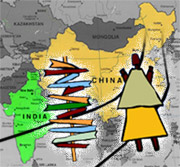Looking for more insights?
Sign up to stay informed about our latest article releases.
If Indian companies in China have varied strategies, Chinese companies in India are a different kettle of fish altogether. For example, they are fewer in number. While there are more than 150 Indian companies in China, the Chinese companies in India add up to barely 20. When the Chinese Embassy in New Delhi sought to catalyse the formation of a chamber of commerce for these companies in early 2006, only 21 turned up. The chamber is yet to be formed. Some observers, however, say these figures don’t tell the whole story. While Chinese companies do encounter some hurdles in their attempts to enter India, they are making inroads by forming joint ventures (JVs), where they are not so much in the public eye, and by taking part in major projects with Indian partners.

Sign up to stay informed about our latest article releases.